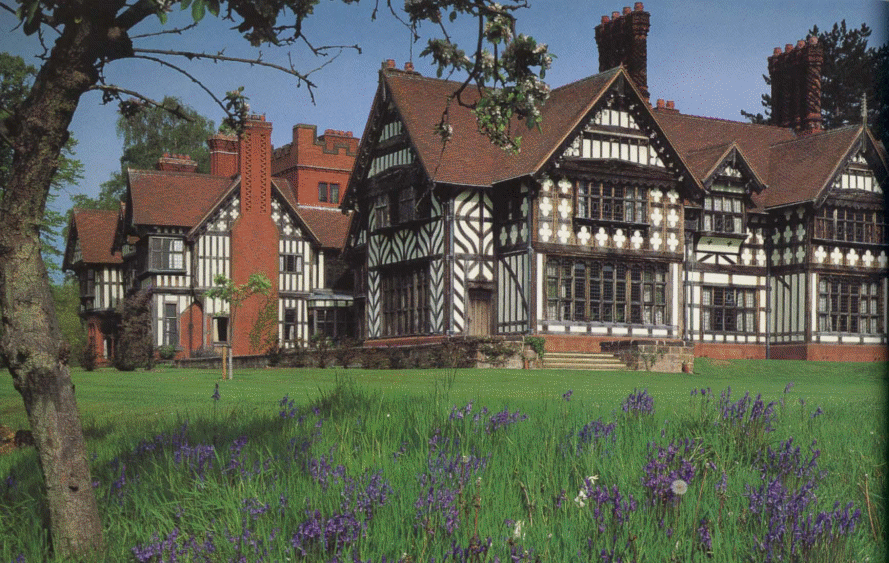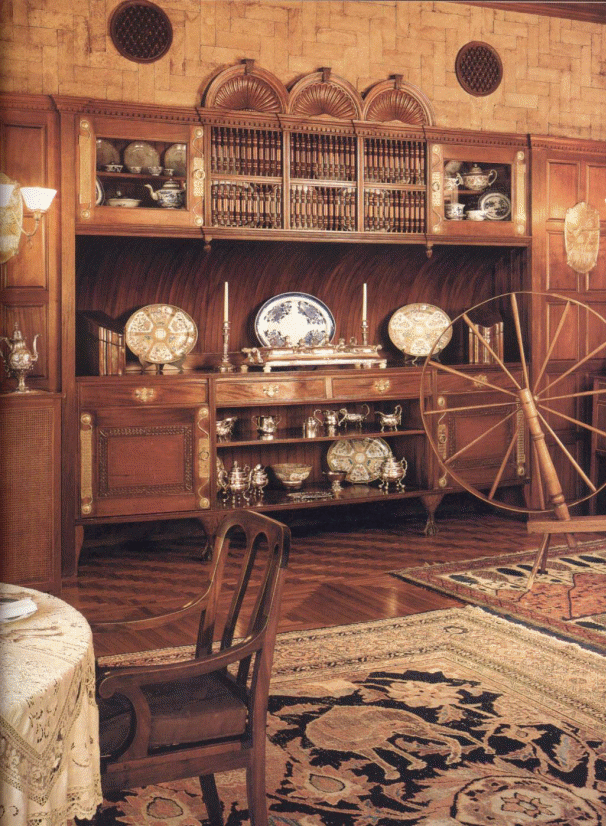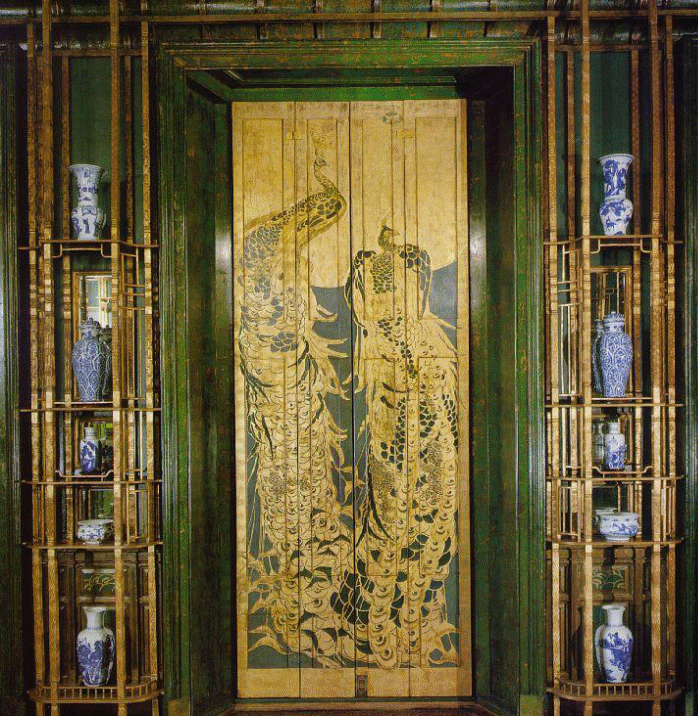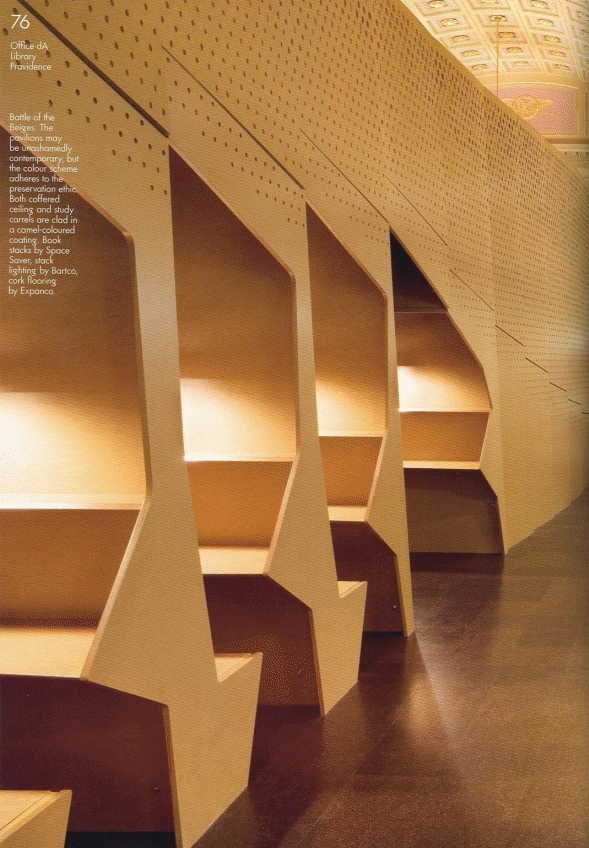European as well as North American design from 1875 to 1900 has such characteristics:
- functionalism and utility;
- minimalism;
- the growing influence of modernist aesthetic views.
These are the major trends that one can single out. It should be noted that these tendencies could be observed not only in architecture but also in interior design. Several factors contributed to the trend, in particular, the growing population, the rise of middle classes, and changing artistic trends. It should be mentioned that understanding this period is essential for modern designers because the tendencies and methods which emerged between 1875 and 1900 have not disappeared nowadays; more likely, they evolved and elaborated. At this point, we need to show how these trends manifested themselves in different areas of design.
When speaking about functionalism, one should primarily refer to more effective space management. This period was marked by the increase of those buildings created for the needs of the community, for instance, libraries or schools. These buildings were designed for the needs of a very wide population. They had to host hundreds if not thousands of people.
For instance, when speaking about the libraries, we need to mention that they had to be suitable for the storage and quick delivery of books. These necessities were reflected in their design. The designers of that period had to make sure that these buildings could accommodate hundreds of people. For instance, we can look at such an example as the Boston Public Library that was constructed in 1895 (Figure 1).

The space in this building was organized in such a way that it could serve many readers within a short period. A similar approach to the design of public libraries is adopted nowadays. Certainly, the design of public buildings has evolved in the twentieth century but it is still based on the principles of functionalism and utility, which were laid down during the period between 1875 and 1900.
The same argument can be applied to schools, which had to provide adequate resources for thousands of students; we can mention the Glasgow School of Art, which was constructed in 1895 (Figure 2). The designers of these buildings had to make sure that space is utilized effectively, and this factor greatly influenced their work.

Thus, it is possible to maintain that functionalism was stipulated by the changes in the demographic structure of the society, especially the increasing number of middle-income people, who wanted to satisfy their educational needs. In the late nineteenth century, designers began to adjust their works for the mass audience rather than a certain individual and in later years such a view of design became even more dominant.
Emphasis on utility and functionality intensified in later years when the global population began to grow at a quicker rate. These features can be observed in modern educational institutions, libraries, restaurants. Moreover, one can say that modern designers pay even more attention to effective time and space management.
The second trend that we can mention is the return to the tradition of Antiquity and the Gothic style. In part, this tendency can be explained by the fact that these architectural styles are more minimalistic. To illustrate this point, we can refer to such buildings as Wightwick Manor (Figure 3), which is a good example of Gothic architecture with its stained-glass windows.

It has to be admitted that reliance on Gothic architecture weakened significantly in the later years. Contemporary exterior designers do not use these styles as often as in the late nineteenth century. This is one of the trends, which did not retain its relevance for modern artists. Again, it can be explained by the fact that contemporary designers adhere to the principles of minimalism, while Gothic and Ancient Greek architecture has many elements that serve only aesthetic functions.
Yet, one should bear in mind that minimalism could be observed in other areas of design, especially furniture. By looking at built-In sideboards (Figure 4), designed in the late nineteenth century, one can see that they also became more minimalistic.

Certainly, one should not confuse minimalism with simplicity or primitivism. The main peculiarity of this design is that every element, which does not serve a practical function, has to be excluded and this task is very far from being simple.
It should be taken into account that the owners of these buildings of people of middle income, who could not afford to spend money on some luxury. This is why designers had to adhere to the principles of minimalism and utility. In the twentieth century, this tendency became even more widespread among different designers. Modern designers of furniture avoid using purely decorative elements that do not fulfill any practical functions.
The third trend, which becomes very conspicuous in the late nineteenth-century design is the growing importance of modernistic aesthetic views. It is possible to single out several effects of this trend. One of them is strict adherence to correct geometrical forms. This shift was very noticeable in the works of those designers, who created products for everyday use, such as cooking utensils. We can mention such a designer, who was known for his teapots and cups (Figure 5).

Furthermore, modernistic aesthetic views led to the growing popularity of oriental motives. To a great extent, this tendency was because many European countries established close contacts with China and Japan.
The influence of oriental cultures was most significant in such areas as furniture design. We can mention the famous Peacock Room in Leyland House that was created in 1887 (Figure 6). This exterior design is full of gilded ornaments depicting birds. This design was adopted from China, and in the context of nineteenth-century Europe, it can be viewed as a form of modernism. The thing is that the representatives of modernism were continuously looking for new forms of expressing art, and oriental design was one of such forms.

At this point, the popularity of oriental ornaments declined because they were not affordable to a wide audience. As we have said before, the use of oriental ornaments emerged due to cultural changes, but they were eventually replaced by other art forms due to economic necessity.
Some of these features and especially minimalism have survived up to this point. This tendency is most important when we are speaking about schools and libraries. For instance, we can mention the Fleet Library in Rhode Island School of Interior Design (Figure 7). This interior design of this building was created in 2006, and it is based on the principles of minimalism and functionality.

Virtually, every element of the décor serves a practical purpose, rather than an aesthetic one. To some degree, this approach is quite understandable since this library has to serve the needs of thousands of students, and it is hardly possible to take into account the aesthetic views of each person. In this case, the minimalist approach seems to be the only solution.
Overall, the late nineteenth century laid many important foundations of contemporary design and its legacies should not be overlooked. Such features as minimalism, functionality, modernistic aesthetics are quite widespread nowadays. The key difference between the nineteenth century and the modern age is that nowadays the designer has to be more focused on the needs of mass manufactures and in some cases, they even have to simplify their work.
Each of the trends that we have described, namely increasing attention to functionality, minimalism, and the rise of modernism were caused by changes in the demographic structure of the society, cultural evolution, and the necessity to find new forms of artistic expression. In later years, the trends in design were influenced by such factors as economic changes and population growth.